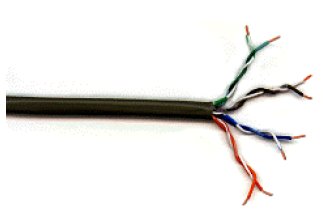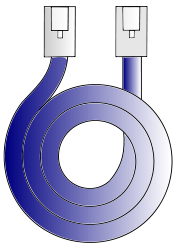Category 5 (CAT5) cable is a multi-pair (usually 4 pair) cable that consists of twisted pair conductors, used mainly for data transmission. Basic CAT5 cable was designed for characteristics of up to 100 MHz. Newer CAT6 cable is designed form 250 MHz. Nowadays there are applications where those cables is used to carry higher frequencies.
Cat 5 Cable Modeling for DVI/HDMI links tells how to analyze the cable performance. The behaviour of each twisted pair is determined by the complex three-dimensional
electromagnetic field in the region within and surrounding the cable. For communications link performance verification we require a simplified representation of the cable that is computationally viable and can be included within the circuit verification environment. The model also needs to correctly represent important cable parameters such as delay, near and far end crosstalk and cable losses.
Cat 5 Cable Modeling for DVI/HDMI links article gives a simple C++ module was written and added to the CppSim behavioural modelling environment. The article also gives a Hspice ‘W’ model.
The combination of field solver and multi-conductor W model in Hspice can be used to simulate all the key signal degradation characteristics such as frequency dependent loss, delay, near and far end coupling and the effect of discontinuities for different UTP cable geometries.



5 Comments
Ally Diary says:
You could definitely see your enthusiasm in the paintings you write. The sector hopes for even more passionate writers like you who aren’t afraid to say how they believe. At all times go after your heart.
Venita Rubash says:
Hi there, I found your site via Google even as looking for a related topic, your website came up, it seems to be great. I have bookmarked it in my google bookmarks.|
Tomi Engdahl says:
Improve and simplify cable simulation
http://www.edn.com/design/test-and-measurement/4391374/Improve-and-simplify-cable-simulation?cid=EDNToday
This article covers the two main loss effects related to cables (the skin effect and dielectric losses) and presents a simple cable modeling method for use in standard SPICE simulators.
Oren Olofson says:
Its like you read my mind! You appear to know so much about this, like you wrote the book in it or something. I think that you can do with a few pics to drive the message home a little bit, but instead of that, this is great blog. A great read. I will definitely be back.|
Genevive Mckahan says:
Very nice post. I just stumbled upon your weblog and wanted to say that I have truly enjoyed browsing your blog posts. After all I’ll be subscribing to your rss feed and I hope you write again very soon!